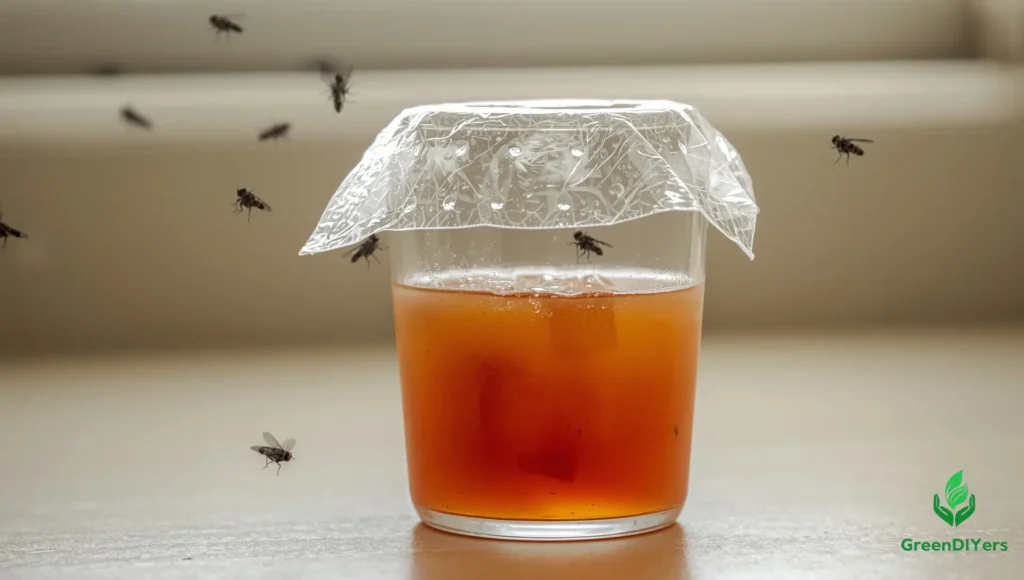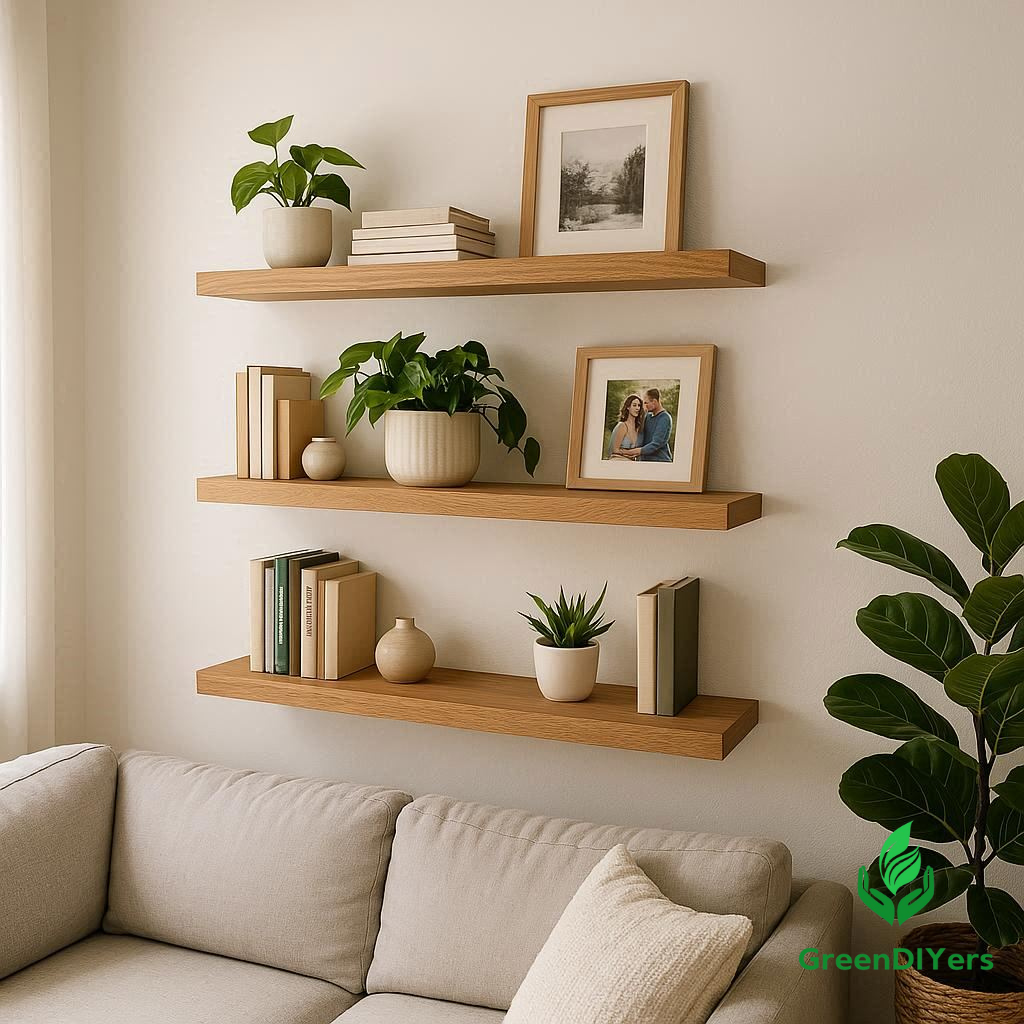Picture this: you’re enjoying your morning coffee when you notice those tiny, annoying fruit flies dancing around your banana bowl. Sound familiar? You’re definitely not alone in this frustrating battle.
Here’s the good news – you don’t need expensive pest control services or harsh chemicals to win the war against fruit flies. With simple household items and the right approach, you can create effective fruit fly trap DIY solutions that actually work.
In this comprehensive guide, you’ll discover seven proven homemade traps, learn why fruit flies invade your space, and master prevention techniques that keep them away for good. Plus, I’ll share troubleshooting tips for those stubborn infestations that just won’t quit.
Ready for a quick win? The apple cider vinegar and dish soap combo (our #1 recommendation) can start catching flies within hours using items you probably already have in your kitchen.
Table of Contents
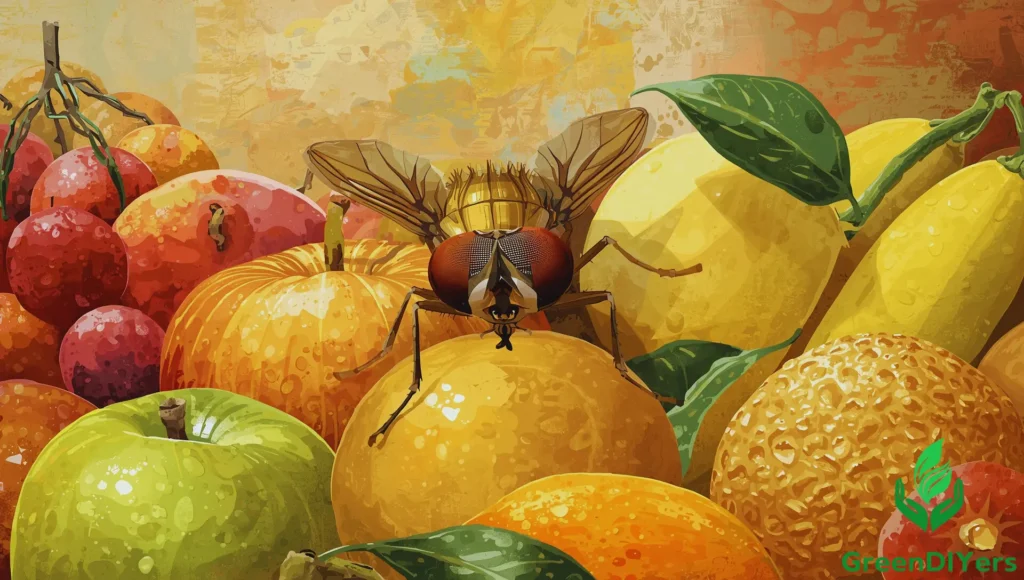
Understanding Fruit Flies: What Attracts Them?
Before diving into trap construction, let’s understand your enemy. Fruit flies are drawn to three main things: ripe or rotting produce, fermenting liquids, and moist environments. They can smell overripe bananas from across the room and lay up to 500 eggs at a time in these perfect breeding spots.
This knowledge is crucial because the most effective fruit fly trap DIY solutions mimic these attractants while adding a deadly twist. When you understand what lures them in, you can create irresistible bait that outcompetes whatever’s currently drawing them to your kitchen.
The Proven DIY Fruit Fly Traps: Step-by-Step Guides
1. The Classic ACV + Dish Soap Trap
Materials Needed:
- Apple cider vinegar (2-3 tablespoons)
- Liquid dish soap (2-3 drops)
- Small bowl or jar
- Plastic wrap (optional)
Step-by-Step Instructions:
- Pour apple cider vinegar into your container
- Add 2-3 drops of dish soap and gently stir
- Place the trap near fruit fly activity
- Wait 24-48 hours for maximum results
Why It Works: The vinegar’s sweet, fermented smell attracts fruit flies, while the soap breaks the liquid’s surface tension. Flies dive in but can’t escape.
Pros & Cons:
- Pros: Highly effective, uses common ingredients, works quickly
- Cons: Requires regular refreshing, can smell strong
Best Use Case: Kitchen counters, dining areas, anywhere you see the most activity.
2. The “Fruit Bait” Cone Trap
Materials Needed:
- Overripe fruit (banana, apple, or peach)
- Wide-mouth jar
- Paper or cardstock
- Tape
Step-by-Step Instructions:
- Place fruit pieces in the bottom of your jar
- Create a paper cone with a small opening at the tip
- Insert cone into jar (wide end up, narrow end down)
- Tape cone edges to jar rim
- Position trap in problem areas
Why It Works: Fruit flies enter through the narrow opening but struggle to find their way out through the small exit.
Pros & Cons:
- Pros: Uses natural bait, catches flies alive, long-lasting
- Cons: Takes longer to set up, fruit can attract other pests
Best Use Case: Severe infestations, areas where you want to avoid liquids.
3. Yeast & Sugar Water Trap
Materials Needed:
- 1 teaspoon active dry yeast
- 1 tablespoon sugar
- Warm water
- Small container
Step-by-Step Instructions:
- Mix yeast and sugar in container
- Add warm water until container is half full
- Stir gently and let sit for 10 minutes
- Place trap where flies congregate
Why It Works: The yeast-sugar combination creates a fermentation smell that’s irresistible to fruit flies.
Pros & Cons:
- Pros: Creates strong attractant, works for 2-3 days
- Cons: Can smell unpleasant, requires yeast on hand
Best Use Case: When you’re out of vinegar, for particularly stubborn infestations.
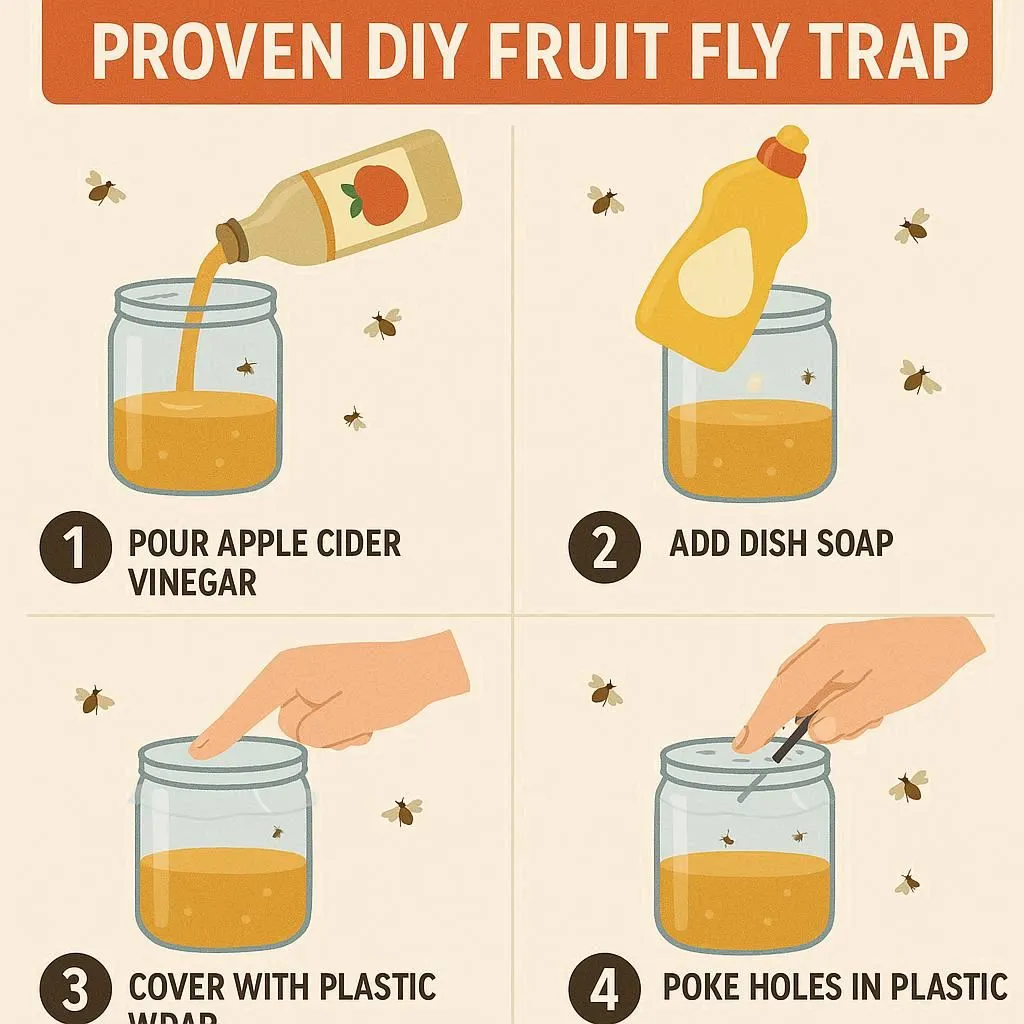
4. Milk, Sugar, Pepper Trap
Materials Needed:
- 1/2 cup milk
- 2 tablespoons sugar
- 1 tablespoon ground black pepper
- Shallow dish
Step-by-Step Instructions:
- Heat milk in a small saucepan
- Add sugar and pepper, simmer for 10 minutes
- Let cool and pour into shallow dish
- Position trap near fruit fly hotspots
Why It Works: This old-fashioned remedy creates a sweet attractant that traps flies when they land.
Pros & Cons:
- Pros: Unique approach, uses pantry staples
- Cons: Requires cooking, less convenient than other methods
Best Use Case: When other traps aren’t working, as a backup option.
5. The Wine/Beer Trap
Materials Needed:
- Leftover wine or beer (1/4 cup)
- Small bowl
- Plastic wrap
- Toothpick
Step-by-Step Instructions:
- Pour wine or beer into bowl
- Cover tightly with plastic wrap
- Poke small holes with toothpick (5-6 holes)
- Place trap in affected areas
Why It Works: Alcohol’s fermented smell attracts fruit flies, and they drown in the liquid.
Pros & Cons:
- Pros: Great use for stale drinks, very attractive to flies
- Cons: Uses alcohol, plastic wrap can be tricky
Best Use Case: After parties, when you have leftover drinks available.
6. The Rubbing Alcohol Spray (Immediate Kill)
Materials Needed:
- Rubbing alcohol (70% isopropyl)
- Spray bottle
Step-by-Step Instructions:
- Fill spray bottle with rubbing alcohol
- Spray directly on visible fruit flies
- Clean up dead flies immediately
- Repeat as needed
Why It Works: Alcohol kills fruit flies on contact by dehydrating them instantly.
Pros & Cons:
- Pros: Immediate results, kills on contact
- Cons: Only works on visible flies, doesn’t prevent new ones
Best Use Case: Quick knockdown of visible flies, complement to other traps.
7. Sticky Traps (Commercial DIY – Quick & Easy)
Materials Needed:
- Yellow sticky traps (from garden center)
- Stands or hanging method
Step-by-Step Instructions:
- Remove protective backing from traps
- Position near fruit fly areas
- Replace when full of flies
- Combine with other attractant methods
Why It Works: Fruit flies are attracted to yellow color and get stuck on adhesive surface.
Pros & Cons:
- Pros: No preparation needed, clean solution, long-lasting
- Cons: Requires purchase, less eco-friendly
Best Use Case: Low-maintenance solution, areas where liquids aren’t practical.
Advanced Tips for Trap Success
Placement makes all the difference. Position your fruit fly trap DIY solutions within 2-3 feet of where you see the most activity. Avoid placing traps directly next to your fruit bowl – you want to lure flies away from food, not toward it.
Fresh bait is crucial. Replace liquid traps every 2-3 days, even if they don’t look full. Old bait loses its attractiveness and can actually repel flies.
Always identify and eliminate the source first. Even the best trap won’t solve your problem if flies keep breeding in a forgotten potato or dirty drain.
Consider using multiple trap types simultaneously. Different flies might prefer different attractants, so variety increases your success rate.
Beyond the Trap: How to Prevent Fruit Flies (Crucial for Long-Term Success)
Prevention beats cure every time. Store ripe fruit in the refrigerator and keep counters clean by wiping up spills immediately. Even tiny amounts of sticky residue can attract fruit flies.
Manage your trash like a pro. Empty bins frequently, especially during warm weather, and always use tight-fitting lids. Rinse containers before recycling, particularly those that held sugary drinks.
Don’t forget your drains. Pour boiling water down kitchen and bathroom drains weekly, followed by a baking soda and vinegar treatment to eliminate buildup where flies might breed.
Secure compost bins with tight lids and turn contents regularly. If composting indoors, use a container with a charcoal filter.
Check window and door screens for holes. Even tiny tears can let fruit flies inside from outdoor breeding sites.
Quick note: fruit flies are different from fungus gnats, which prefer moist soil. If your “fruit flies” are coming from houseplants, you’re dealing with a different pest that needs different solutions.
Troubleshooting Common Fruit Fly Problems
“My traps aren’t working!” Usually means you haven’t found the breeding source. Check behind appliances, in recycling bins, and inside garbage disposals. Sometimes the source isn’t obvious.
“Flies are still here after trapping.” Focus harder on prevention. Adult flies you see might be coming from eggs that hatched after you set traps. It can take 1-2 weeks to break the cycle completely.
“Are these fruit flies or gnats?” Fruit flies hover around produce and have red eyes. Drain flies are fuzzier and prefer sinks. Fungus gnats swarm around plants and windows.
Safety first: keep traps away from pets and children. While most ingredients are household items, ingestion isn’t recommended.
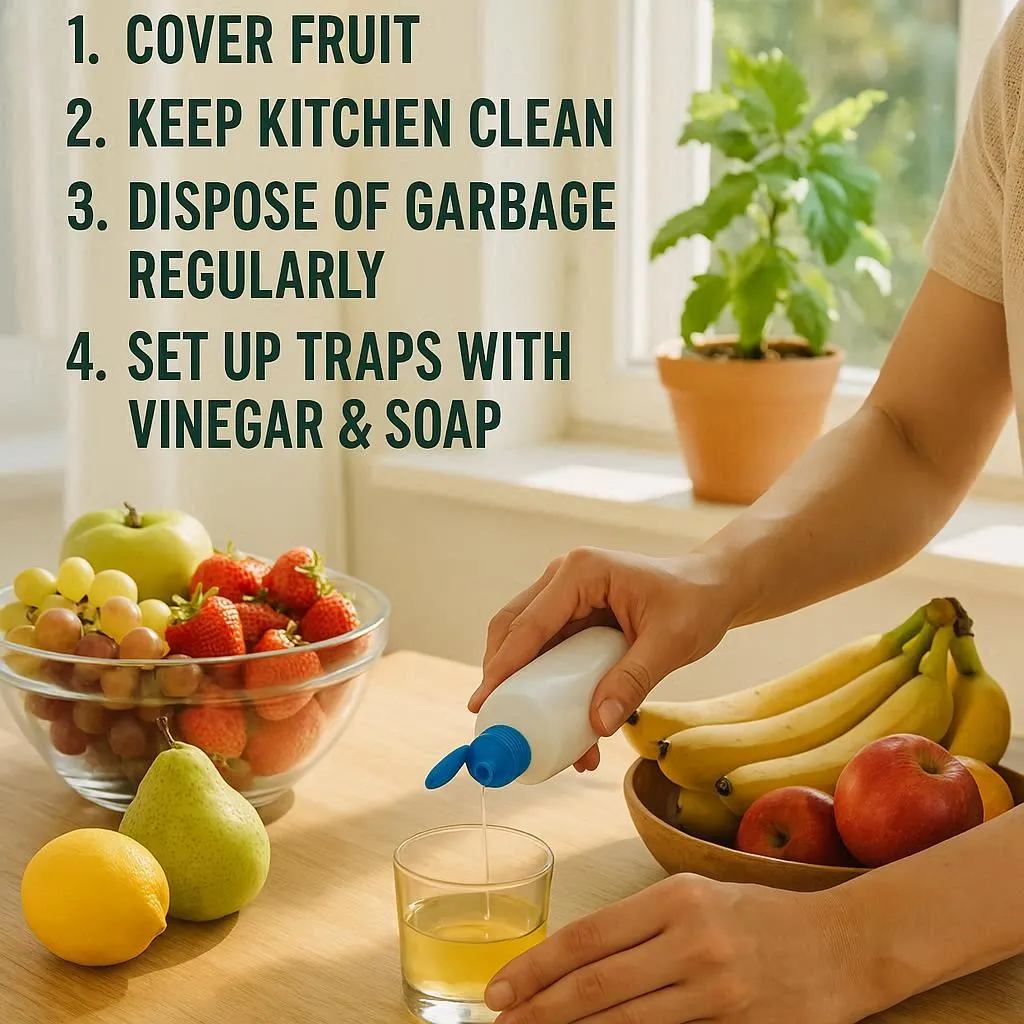
Frequently Asked Questions (FAQ Section)
How long does it take for a fruit fly trap DIY to work? Most fruit fly trap DIY solutions start catching flies within 2-4 hours. Complete elimination typically takes 7-14 days as you break the breeding cycle.
What is the best bait for a fruit fly trap DIY? Apple cider vinegar with dish soap consistently performs best. The fermented smell mimics what flies naturally seek.
Can fruit flies live in drains? Yes, fruit flies can breed in the organic matter that builds up in drains. Regular cleaning prevents this problem.
Do fruit flies die in the cold? Fruit flies become inactive below 60°F and die in freezing temperatures. However, they can survive indoors year-round.
Are fruit flies harmful? While annoying, fruit flies don’t bite or sting. They can potentially spread bacteria from rotting matter to clean surfaces.
What’s the difference between fruit flies and gnats? Fruit flies are attracted to produce and fermented items, while gnats prefer moisture and organic matter in soil or drains.
Conclusion & Call to Action
Success against fruit flies requires a two-pronged approach: effective trapping plus consistent prevention. The fruit fly trap DIY methods in this guide give you multiple options to find what works best in your home.
Remember, even the most effective trap is just a temporary fix without proper prevention. Clean regularly, store food properly, and maintain your drains to keep these pests from returning.
Start with the apple cider vinegar and soap trap today – you probably have everything you need right now. Within 24 hours, you’ll see real results.
Have you tried any of these methods? Share your success stories in the comments below, and don’t forget to pass this guide along to anyone battling their own fruit fly invasion. Together, we can win this war one trap at a time!Retry

